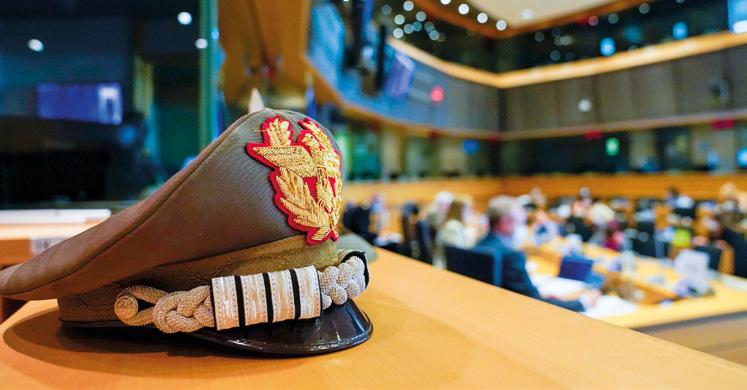
3 minute read
Hartmut Bühl, Publisher, Paris The Regional Comprehensive Economic Partnership (RCEP) Strategic and economic implications for the EU
The world’s largest free trade zone The Regional Comprehensive Economic Partnership (RCEP)
by Hartmut Bühl, Publisher, Paris
Trade deals do not only have an economic impact. They also have a geopolitical aspect, cultural outcomes and often prepare a reordering of regional alignments, mostly creating stability. On 15th November 2020, the fifteen countries of the Regional Comprehensive Economic Partnership (RCEP) held a solemn virtual signing ceremony, creating the world’s largest free trade area stretching from the southern borders of Kazakhstan in the North to the South Pacific, including New Zealand. Negotiations over the RCEP started in 2012 and were concludJapan, New Zealand and South Korea. Members of the RCEP make up nearly a third of the world’s population and account for nearly 30 % of GlobChina al Gross Domestic Product (GDP). The deal excludes the of its withdrawal from US President in 2017, expressing his doubts on globalisation which might not be advantageous to his country. The remaining members went on multilaterally in form of the Comprehensive and Progressive Agreement shows that globalisation is not dead and China’s Premier, Li Keqiang, praised the RCEP deal as “a victory of multilateralism and free trade”! India, also party to the negotiations, pulled out last year on somewhat nationalistic decision, but the RCEP is keeping its door open for India, whereas it is closed for the US – at least for the time being. First impressions of the RCEP There is no doubt that the RCEP will boost economic integration and influence member countries’ future trade policies. The Pact includes commitments in goods, services, investment, competition and last but not least, e-commerce. Standards, intellectual property rights and dispute settlement mechanisms have also been agreed. All in all, the pact is a significant achievement between countries which are extremely diverse in nearly all areas, but they
were showing a high level of flexibility in the negotiations. An example is that tariff schedules extend to at least 20 years.
ed by the ten ASEAN countries1 as well as Australia, China,
United States because In another important area however, they stood shoulder to shoulder by agreeing on one single set of rules of origin for
the Trans-Pacific Partnership (TPP) negotiations at the initiative of the newly elected
Myanmar Thailand
Malaysia
Singapore
Indonesia Vietnam Laos
Cambodia all goods. This is the first time that China has signed up to a regional multilateral trade pact, having already some bilateral trade agreements in the region. And the RCEP is also the first trade pact that includes China, Japan and South Korea. The main effect of this regional pact is to have wo-
South Korea Japan ven the various trade agreements of the Association of Southeast Asian Nations (ASEAN) with the five other countries of
Countries participating in the RCEP
the Indo-Pacific region into a single framework. The western world mostly
Philippines
Brunei sees the pact as an extension of China’s influence in the region and likely to boost the total Gross
for Trans-Pacific-Partnership (CPTPP)2. The RCEP also Domestic Product (GDP) of RCEP
Australia Member States.
The European Union’s first impression of the RCEP was expressed by the EU High Representative/Vice President of
who said: “The Indo-Pacific
graphic: ESDU, using Negoworks, stock.adobe.com
region is of strategic importance to us. We must enhance our engagement to make sure our voice is heard and the overall structure of regional cooperation remains open and rules based. ”
the Commission, Josep Borrell, New Zealand
1 The Association of Southeast Asian Nations ASEAN) was founded on 8th
August 1967 and has actually 10 members: Brunei, Cambodia, Indonesia,
Laos, Malaysia, Myanmar, Philippines, Singapore, Thailand, Vietnam, and 2
Observers (Papua New Guinea and Timor Leste). Objectives: economic growth and to stimulate regional peace and stability based on the rule of law and the principle of United Nations. 2 The CPTPP is a trade agreement between Australia, Brunei, Canada, Chile,
Japan, Malaysia, Mexico, New Zealand, Peru, Singapore and Vietnam, which entered in force on 30th December 2018. The treaty evolved from the Trans-Pacific-Partnership (TPP) which never entered in force because of the withdrawal of the US in 2017.










